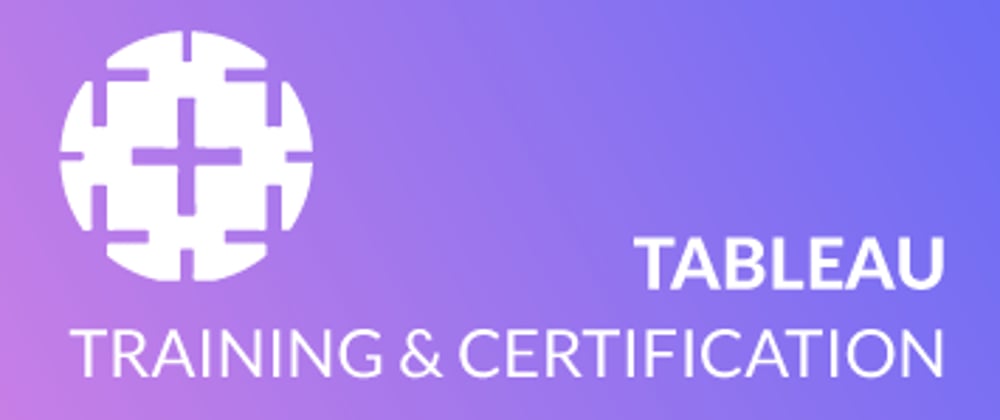Tableau's beginnings date to the year 2013. The concept behind the creation of Tableau was to provide an application that could create spreadsheets, databases, and other information sources that an average user could easily comprehend. The co-founders of Tableau, Christian Chabot (CEO), Pat Hanrahan (Chief Scientist), and Chris Stolte (Chief Development Officer) began development by combing SQL for databases and a descriptive language that produced visually appealing graphics.
Simply put, Tableau is a data visualization tool extensively used in Business Intelligence (BI) and data analytics at the current time. Its flexibility and simplicity of use are the main reason for its broad acceptance within the data science and analytics community. Even professionals with no background in analytics or business intelligence can produce stunning visualizations, aided with some instruction and practice.
Facts to know Major brands, such as Nike, Skype, Tesla, Accenture, Coca-Cola, TCS, JPMorgan Chase & Co., Honeywell, GoDaddy, and many more, use Tableau as a testimony to its popularity.
Begin with the installation
To learn and use Tableau to visualize data, Begin with installing the software. It is available in two versions: Desktop as well as Public.
Public versions are free and free-of-cost and can be used for testing purposes.
Desktop is a premium licensed version accessible to departments, technologies, and industries. Learn Tableau using Tableau Training from the experts.
Tips: You may want to test the free version first, even if you plan to upgrade to the paid version.
What is the best way to begin?
Download any version from the linkhttps://public.tableau.com/en-us/s/download. Input your email into the "download the app" bar.
When the file download is completed within the .exe extension, open it.
Take note of the conditions and terms, then click on the 'install' button.
Tableau will start automatically when the installation is complete.
Learn about Tableau's products
After you've completed the installation, now is the time to get acquainted with Tableau's software to help you efficiently complete tasks.
- Tableau desktop With the option of a 14-day trial, this tool for visualizing data assists in the creation of dynamic stories as well as dashboards. It is suitable for use by individuals and is available in two versions that include a personal edition for the tableau desktop and the tableau desktop private edition. The personal edition provides access to limited data as well as sharing capabilities. Professional versions are suitable for business use and provide complete access to data and sharing capabilities.
Tableau online
The cloud-based Tableau analytics platform can be described as business intelligence on the cloud. It is a tool for sharing data that creates dashboards and then uploads them to Tableau online via Tableau Desktop. Tableau Desktop. The dashboard is accessible through mobile applications and also on the web. Customers and colleagues can access the dashboard by clicking the shared link and making any changes to the dashboard.
Selecting Tableau Online lets you save on the installation of hardware. Data is saved on cloud servers and managed through Tableau groups. You can effectively use functions such as asking for information, editing, interaction with data, access to data and analysis capabilities, data management, and many more.
Tableau Online has some additional benefits; among them is no maintenance cost. Additionally, users can connect as many as 40 sources of data online. Some include MySQL, Amazon Aurora, Hive, Spark SQL, and many more.Tableau server
Tableau Server is much like Tableau Online. It's used to share information such as workbooks, dashboards, and reports created by Tableau Desktop applications across various teams. But, anything that needs to be shared must first be uploaded to Tableau Desktop. Following this, it is automatically uploaded to the server.
The user doesn't need to install a server to access uploaded reports. Simply sign in to any Tableau platform to access all files. It's ideal as a collaboration tool in a company.
Facts to know: When you inquire in a natural language interpreted by AI, you'll get AI-driven explanations for your information.Tableau Public
As the name implies, the Tableau application is a no-cost public platform. Everything created on it is available to the public through the cloud services accessible to everyone.
There's also a Tableau public community where you can access and analyze all information distributed across the globe. You can save your workbooks and dashboards in the 10GB storage available to each user.
Journalists can benefit from the use of Tableau Public to their advantage. Tableau Public. It's also an excellent option for people looking to share dynamic data online and make their work visible.Tableau prep
This product is unique and utilized for data preparation. Raw data are analyzed and prepared to be presented and analyzed. It has interfaces and tools that allow the data to be combined, processed, and converted into usable formats. Because Tableau Prep is fairly easy to use, it is accessible to all users. can use it in all organizations.
Tableau Prep comes in two versions:Tableau Prep Builder: Builds data flows.
Tableau Prep Conductor Schedule, share, and manage the flow built in the builder of Tableau Prep.Tableau mobile
This is the app to pick if you're looking to utilize Tableau for mobile phones and tablets. It allows you to create dashboards and workbooks with touch gestures. You can filter, select and drill down in a flash using your smartphone.
Tableau Mobile automatically adjusts to screen sizes automatically. It also has dashboard security and designing, searching, sharing, and alerting capabilities.







Latest comments (0)